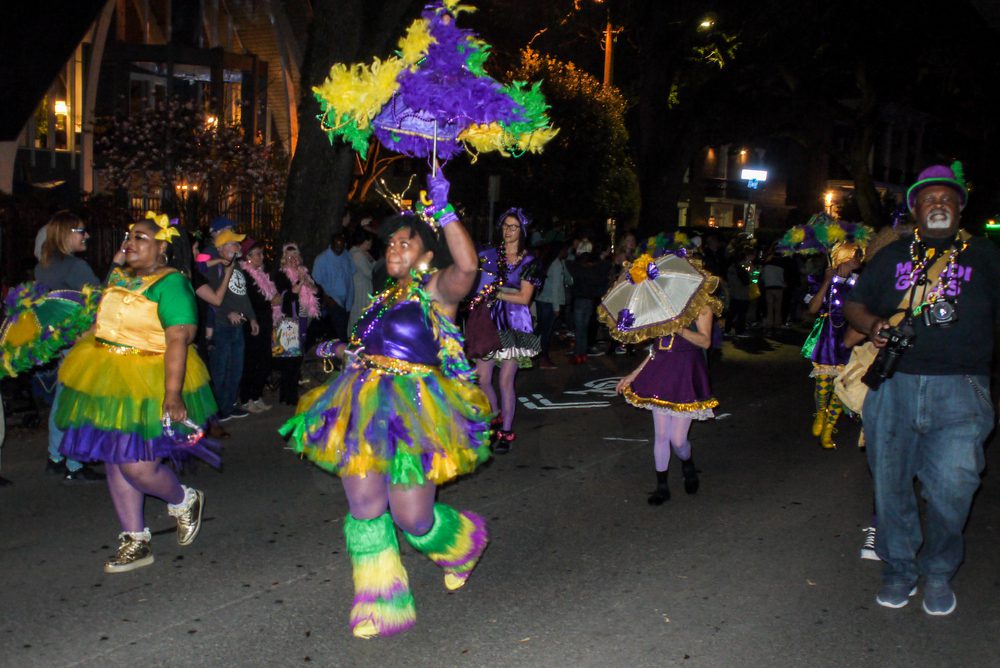Freedom and Liberation: Bounce Music Roundtable Introduction
This post is part of our forum on Bounce Music

To understand Bounce music’s history and influence on American culture, it is first necessary to understand the history of housing segregation in American cities and the failure of the U.S. government to provide sound infrastructure for the city of New Orleans to prevent the catastrophic flood damage caused by Hurricane Katrina. Scholars Keeanga-Yamahtta Taylor and Richard Rothstein have both explained how the U.S. government and banks created a real estate industry that provided two distinct housing options for American citizens. Housing developments in suburban areas for whites, and overcrowded city housing projects for Blacks and other non-whites. Bounce music was born in the housing projects of New Orleans in the late 1980s and early 1990s. Characterized by a steady tempo ranging from 95 to 105 beats per minute, Mardi Gras Indian chants, call and response, and the acknowledgment of New Orleans neighborhoods, Bounce music was initially played at block parties and nightclubs. The genre’s originators, including producers DJ Jubilee and Mannie Fresh, combined elements of the “Triggerman beat” and the “Brown beat” to produce a sound over which rappers could encourage their audiences to “twerk,” or freely shake their asses to their raunchy, controversial, liberating, and empowering lyrics.1 This is evident in one of the genre’s most recognizable songs, “Back that Azz Up” by Juvenile.
Bounce music, as its foremost representative, Big Freedia asserts, encourages people to be free.2 For Big Freedia, a Black gay male artist who embraces feminine pronouns, Bounce gave her and her fellow New Orleans natives party anthems that allowed them to free themselves from the psychological and emotional effects of the poverty and violence that segregated housing programs produced. Bounce also gave Big Freedia and other entertainers an opportunity to present and preserve New Orleans’s history and culture in the wake of Hurricane Katrina.
Two months after the historic hurricane and subsequent flooding devasted New Orleans, FEMA director, Michael Brown, was forced to resign after admitting that the government knew that the flood barriers protecting the city were inadequate and failed to upgrade them. As a result of the government’s infrastructure failures, nearly 400,000 New Orleanians were forced to leave their homes. Bounce musicians Fifth Ward Weebie and Mia X documented the government’s disastrous responses in songs such as “Fuck Katrina” and “My FEMA People.” These songs—and other Bounce hits— gave displaced New Orleanians opportunities to connect with other natives who found themselves in Houston, Dallas, and other cities across the South, and around the country. The music allowed them to hear home from miles away. Big Freedia, who landed in Beyonce’s hometown of Houston, gained prominence there by performing Bounce music in nightclubs and other venues. Big Freedia’s transition from a local and regional artist to national recognition came in part due to her collaboration with the former Destiny’s Child singer.
However, Big Freedia’s success came largely from her ability to hustle. Through albums and her hit reality show, Big Freedia: Queen of Bounce, Big Freedia not only found success as a New Orleans artist and cultural ambassador, but she also shed light on the contributions of other LGBTQIA artists to Bounce. With “Sissy Bounce,” Big Freedia, Sissy Nobby, Katey Red, and others created an inclusive space in hip-hop, a culture notorious for its homophobia. Essentially, these artists revealed that the New Orleans hip-hop scene was shaped and defined by Black men, women, and humans who identified across the gender and sexual spectrum. Since the early 2010s, Sissy Bounce, and the genre that it emerged from, has become an important ingredient in the production of contemporary rap and R&B and has invited audiences to “twerk something” to the beat.3
From Drake’s 2018 hit single, “Nice for What” to Beyonce’s 2022 album, “Renaissance,” New Orleans Bounce music has become one of the most important cultural productions heard around the world. Artists such as Lizzo and Megan Thee Stallion have helped to bring Bounce music’s signature dance, twerking, more into the mainstream. Twerking, like Bounce music, is shaped by the ideas of freedom, pride, and self-expression.
The essays in this series not only pick up on the ideas expressed in Bounce music and twerking but also provide more insight into the genre’s history and culture. Matt Miller’s essay informs on the rise of Southern hip-hop and Bounce music’s place within that region and in the greater hip-hop community over the last thirty years. J.M. Nimocks’ piece considers the relationship between Bounce and House music, a genre that was largely defined by Chicago DJs and producers, and members of the LGBTQIA community. Lauren Rorie’s autoethnographic piece unpacks Bounce’s role in the development of African American roller-skating communities, while Hettie Williams considers how gender, race, and sexuality inform Bounce music’s history and culture. Ultimately, these essays demonstrate that the music genre’s ideas of freedom and liberation have significant implications for understanding Black life in the 21st century. Bounce music’s history reveals how African Americans, particularly Black New Orleanians, created a sound and culture that allowed them to thrive in spaces that the government designed to destroy them.
- Mannie Fresh explains how samples from The Showbows and DJ Cam Paul combined the “Triggerman beat” and the “Brown beat” to create Bounce songs. See the 2019 article, “Mannie Fresh is Pure Energy.” https://splice.com/blog/mannie-fresh-q-and-a/. ↩
- I’m taking my cue here from Big Freedia’s 2014 album, Just Be Free, here. The album was released by Asylum Records. ↩
- I’m referencing Cheeky Blakk’s 1994 song, “Twerk Something,” released on Tombstone Records. Cheeky Blakk, born Angela Woods, is a pioneering Bounce music artist. ↩
